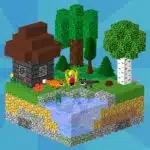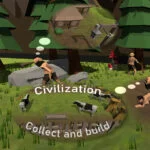Building Games – Craft Worlds and Design Your Dreams 🏗️
Building Games are creative and strategic experiences where players design, construct, and manage structures or entire civilizations. These games offer an outlet for creativity while challenging players to solve problems, allocate resources effectively, and foster thriving communities. Whether it’s city-building, base management, or open-world construction, Building Games continue to captivate players with their diverse mechanics and expansive possibilities.
📜 Evolution of Building Games
The roots of Building Games can be traced back to early text-based simulations from the 1960s. Titles like The Sumerian Game (1964) and Hamurabi (1968) introduced rudimentary city management concepts, focusing on resource allocation and strategic planning. The release of SimCity in 1989 marked a significant milestone for the genre, allowing players to design and oversee their virtual cities with unprecedented freedom.
As technology advanced, Building Games diversified into various sub-genres, incorporating new themes, mechanics, and graphical improvements. From constructing intricate cities in Cities: Skylines to developing factories in Factorio, the genre has expanded to accommodate a wide range of creative and strategic interests.
🔑 Key Features of Building Games
Building Games offer a broad spectrum of features that cater to different player preferences. These include:
- Gestione delle risorse: Effectively gathering, allocating, and utilizing resources is often central to gameplay. Titles like Factorio emphasize efficiency and logistics, requiring players to optimize production lines and manage supply chains.
- Pianificazione strategica: Games such as SimCity e Cities: Skylines require careful planning of infrastructure, zoning, and economic systems to ensure sustainable growth.
- Customization and Creativity: Sandbox titles like Minecraft provide nearly limitless freedom to construct structures, landscapes, and worlds from scratch.
- Progression Systems: Many games reward players with technological advancements, new building options, or aesthetic enhancements as they progress.
- Challenges: Environmental disasters, economic downturns, or hostile invasions are common hurdles that test players’ adaptability and problem-solving skills.
🏘️ Popular Sub-Genres of Building Games
The Building Games genre encompasses various sub-genres, each offering unique gameplay experiences:
- City-Building Games: Emphasize infrastructure management, population growth, and economic stability. Cities: Skylines remains a top choice for urban planning enthusiasts.
- Base-Building Games: Focus on constructing and defending bases in hostile environments. Games like Factorio e RimWorld highlight resource management and tactical planning.
- Sabbiera Giochi di costruzione: Provide open-ended environments where creativity takes precedence over objectives. Minecraft is a quintessential example, allowing players to construct and explore without constraints.
- Construction and Management Simulations: Combine building with operational oversight, such as theme park management in Planet Coaster or zoo administration in Planet Zoo.
🌟 Why Building Games Appeals to Different Players
Building Games attract various audiences due to their adaptability and creative potential. Reasons for their widespread appeal include:
- Creative Expression: Players enjoy constructing personalized worlds and structures, exploring architectural styles, and designing intricate systems.
- Strategic Depth: The requirement to balance resources, plan layouts, and overcome challenges provides rewarding and intellectually stimulating gameplay.
- Achievement and Progression: Unlocking new technologies, expanding territories, and refining processes offer satisfying milestones.
- Relaxation and Escapism: The freedom to build without restrictive objectives allows players to unwind and experiment at their own pace.
📈 Trends and Audience Demographics
Building Games continue to thrive, with a growing emphasis on user-generated content, modding communities, and multiplayer collaboration. Games that encourage creativity and social interaction, such as Minecraft e Cities: Skylines, enjoy sustained popularity among diverse age groups.
The appeal of Building Games spans from younger players captivated by sandbox experiences to adults drawn to strategic planning and resource management. The increasing availability of high-quality tools and platforms further supports the growth and innovation of the genre.
























































































































![FNF Smoke Em Out Struggle [Release Remix]](https://www.y9freegames.com/wp-content/uploads/2021/08/FNF-Smoke-Em-Out-Struggle-150x150.jpg.webp)







